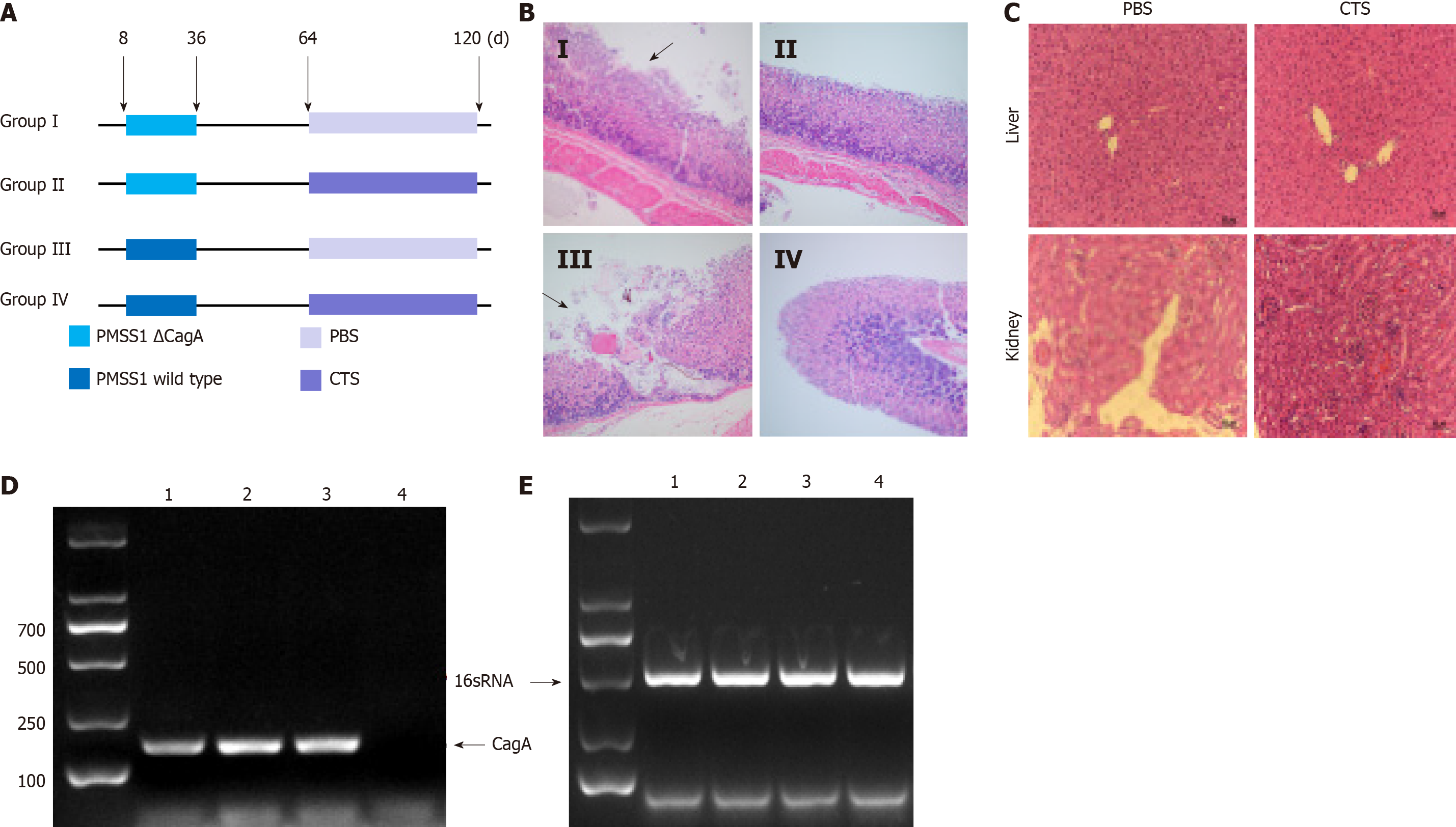Copyright
©The Author(s) 2021.
World J Gastrointest Oncol. Jul 15, 2021; 13(7): 693-705
Published online Jul 15, 2021. doi: 10.4251/wjgo.v13.i7.693
Published online Jul 15, 2021. doi: 10.4251/wjgo.v13.i7.693
Figure 6 Cryptotanshinone inhibits cytotoxin-associated gene A-induced mucosal lesions in the stomach of mice.
A: Mice were divided into four groups (n = 8 per group) and received the treatments indicated in the graphical representation; B: After the treatments, the mice were sacrificed, and the stomach was resected for hematoxylin and eosin (H&E) staining. The black arrow shows mucosal erosion; C: The mice were administered cryptotanshinone (CTS) (10 mg/kg) intragastrically for 1 mo, and the toxicity to the liver and kidney was assessed by H&E staining; D and E: Isolated Helicobacter pylori strains were authenticated through the polymerase chain reaction assay using specific primers. 1: Pre-Mouse Sydney Strain 1 (PMSS1) wild-type; 2: SS1 strain-isolated; 3: PMSS1 wild-type-isolated; 4: PMSS1 ∆cytotoxin-associated gene A (CagA)-isolated.
- Citation: Chen ZM, Hu J, Xu YM, He W, Meng L, Huang T, Ying SC, Jiang Z, Xu AM. Cryptotanshinone inhibits cytotoxin-associated gene A-associated development of gastric cancer and mucosal erosions. World J Gastrointest Oncol 2021; 13(7): 693-705
- URL: https://www.wjgnet.com/1948-5204/full/v13/i7/693.htm
- DOI: https://dx.doi.org/10.4251/wjgo.v13.i7.693









